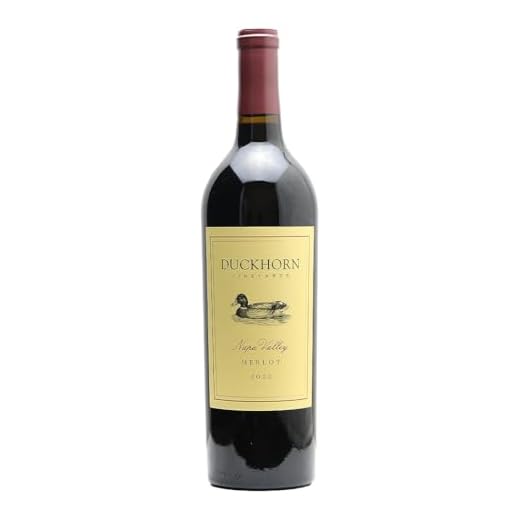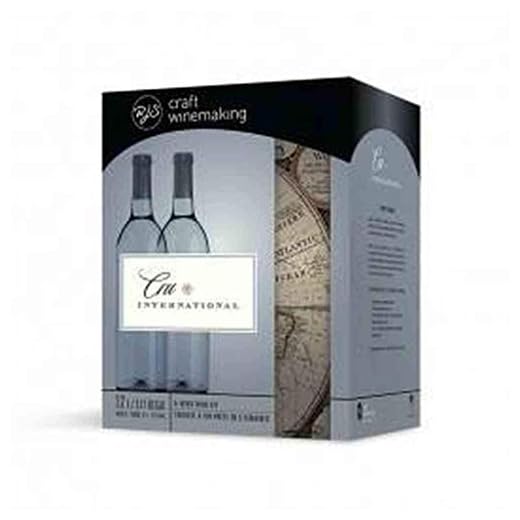



For those seeking a refined experience, I recommend exploring a few standout selections. One excellent choice is a Cabernet Sauvignon from Napa Valley, known for its robust flavor profile and rich tannins. Another option is a Syrah from the Rhône Valley, which offers a complex blend of dark fruits and subtle spices, making it a fantastic companion for grilled meats.
Consider also a Malbec from Argentina, celebrated for its velvety texture and notes of blackberry and plum. It pairs beautifully with hearty dishes. If you’re in the mood for something a bit different, a Sangiovese from Tuscany, with its bright acidity and cherry undertones, is perfect for Italian cuisine.
For those who appreciate a bolder option, a Zinfandel from California, with its jammy fruit flavors and peppery finish, can elevate any gathering. Lastly, don’t overlook a Tempranillo from Spain, especially one aged in oak, which brings depth and richness to the table.
Identifying Quality Varietals
Cabernet Sauvignon stands out as a classic choice, renowned for its bold structure and dark fruit flavors. This varietal often exhibits notes of blackcurrant, plum, and subtle hints of green bell pepper, making it a versatile companion for various dishes.
Merlot offers a softer profile, with ripe berry aromas and a velvety mouthfeel. Its approachable nature makes it a favorite among many, pairing beautifully with roasted meats and hearty pasta dishes.
Malbec, originally from France but now a staple in Argentina, presents a rich, fruit-forward taste. Expect flavors of blackberry and plum, often complemented by a touch of spice, making it an excellent match for grilled meats.
Syrah, particularly from regions like the Rhône Valley, delivers a complex flavor profile with dark fruit, pepper, and smoky undertones. This option pairs well with barbecued dishes and rich stews.
| Varietal | Flavor Notes | Food Pairings |
|---|---|---|
| Cabernet Sauvignon | Blackcurrant, plum, green bell pepper | Grilled steak, lamb |
| Merlot | Ripe berries, velvet | Roasted chicken, pasta |
| Malbec | Blackberry, plum, spice | Grilled meats, empanadas |
| Syrah | Dark fruit, pepper, smoke | Barbecue, rich stews |
For a unique choice, try a Sangiovese from Italy. Its tart cherry and earthy flavors make it a delightful pairing with tomato-based dishes.
Understanding these varietals and their characteristics allows for informed selections, enhancing the enjoyment of meals and gatherings. Each bottle tells a story, and the right choice elevates any dining experience.
Understanding the Characteristics of Dry Red Wine
For those seeking a bold and expressive beverage, look for varieties such as Cabernet Sauvignon, Merlot, or Syrah. These selections generally exhibit low residual sugar levels, ensuring a more pronounced flavor profile. When assessing the taste, expect notes of dark fruits like blackberry, plum, and cherry, coupled with hints of spice, oak, or earthiness.
Aroma and Flavor Profile
The olfactory experience is equally important. Aromas of blackcurrant, chocolate, and leather are common in quality selections. A well-structured bottle often presents a balance between acidity and tannins, which enhances the overall mouthfeel. When pairing with food, opt for hearty dishes, grilled meats, or rich sauces to complement the robust characteristics of the drink.
<h3.Selection Tips
When choosing a bottle, consider the region of origin. For instance, wines from Bordeaux or Napa Valley often maintain a reputation for excellence. Check the label for the alcohol content; generally, a higher percentage indicates a richer taste. Lastly, exploring lesser-known producers can lead to delightful surprises and great value.
Popular Varieties of Dry Red Wine
Cabernet Sauvignon stands out for its bold structure and dark fruit flavors, making it a favorite for many. This varietal often exhibits notes of blackcurrant, plum, and hints of green bell pepper, offering a robust experience. Pair it with grilled meats for an excellent match.
Merlot is another well-received choice, known for its smoother profile. With flavors ranging from cherries to chocolate, it appeals to those who prefer a softer touch. This grape complements dishes like roasted chicken or pasta with tomato sauce beautifully.
Syrah/Shiraz
Syrah, or its Australian counterpart Shiraz, delivers a spicy and bold flavor. Expect blackberries, pepper, and smoky undertones. It pairs wonderfully with barbecued meats or rich stews, enhancing the meal with its intensity.
Malbec
Originating from France but embraced by Argentina, Malbec has gained popularity for its dark fruit and velvety texture. It typically showcases blackberry, plum, and cocoa notes. The wine harmonizes with hearty dishes like lamb or beef, making it a versatile selection.
Tempranillo, the backbone of many Spanish wines, features a rich tapestry of cherry, leather, and earthy flavors. Its complexity makes it an ideal companion for savory dishes like paella or grilled vegetables.
Each of these varieties brings unique characteristics and food pairing opportunities, allowing for exploration and enjoyment in every glass. Discovering personal preferences among these options can enhance any dining experience.
How to Identify Dry Red Wines in Stores
Look for specific labels indicating low residual sugar content. Generally, wines with less than 1% sugar are classified as unsweetened.
Examine the color. Deep, dark hues often signify full-bodied varieties, while lighter shades may suggest a more delicate flavor profile.
Check the back label for tasting notes. Terms like “bold,” “structured,” or “full-bodied” typically suggest a less sugary profile.
Familiarize yourself with common varietals known for their low sweetness:
- Cabernet Sauvignon
- Merlot
- Syrah/Shiraz
- Malbec
- Tempranillo
Ask store staff for recommendations. Knowledgeable employees can guide you to selections that align with your preferences.
Consider the region of origin. Certain areas are renowned for producing less sugary options. For example, wines from Bordeaux or Barolo are typically drier.
Look for certifications or designations on the label. Some wines may be labeled “no added sugar” or “low sugar,” providing assurance of their profile.
Attend tastings. Getting acquainted with various styles will help refine your palate and enhance your ability to identify desired characteristics.
Food Pairing Tips for Dry Red Wines
When selecting a companion for your chosen beverage, consider robust meats like lamb or duck. The structure and tannins enhance the flavors of these dishes beautifully. For a lighter option, grilled salmon works surprisingly well, especially when seasoned with herbs.
Cheese can elevate the experience; opt for aged varieties such as Gouda or Cheddar, which harmonize with the depth of the drink. If you prefer a vegetarian approach, earthy mushrooms, particularly in a risotto, create a delightful pairing.
Spicy dishes, like a well-seasoned chili, can complement the intensity of your selection, balancing heat with the wine’s body. For a classic choice, a tomato-based pasta sauce is an excellent match, as the acidity of the sauce works with the fruitiness of the beverage.
For those considering a casual gathering, charcuterie boards featuring cured meats and olives can cater to a range of palates. Don’t shy away from experimenting; sometimes unexpected pairings yield the most satisfying results. For maintenance tips on your wine storage, you might find this link helpful: best cleaner for pressure washing hardi plank.
Serving Temperature and Glassware for Quality Red Varietals
For optimal enjoyment, serve these bold beverages at a temperature between 60°F and 65°F (15°C to 18°C). This range enhances the complex flavors and aromas, allowing the characteristics to shine.
Glassware Recommendations
Selecting the right glass is crucial. A wide-bowled glass with a tapered rim is ideal, as it allows for better aeration and concentration of scents. Here are some options:
- Bordeaux Glass: Perfect for full-bodied varieties. Its large bowl encourages aeration.
- Burgundy Glass: Suitable for lighter styles. The wider bowl enhances delicate aromas.
- Universal Glass: Versatile option that works well for various types.
Serving Tips
Before pouring, consider decanting. This process not only aerates the liquid but also separates sediment from older selections. Aim to let it breathe for at least 30 minutes to an hour, depending on the age and structure.
Always fill the glass to about one-third full. This provides ample space for the aromas to develop while preventing spills. Enjoy the experience by swirling gently to release the bouquet before taking a sip.
Common Misconceptions About Dry Red Varietals
Many believe that all robust selections are bitter or overly tannic, but that’s a misconception. In fact, numerous options offer a balanced profile, showcasing fruitiness and subtle spice without overwhelming a palate.
Another common error is equating sweetness with quality. Just because a bottle lacks residual sugars doesn’t mean it’s inferior. Some of the finest selections are crafted to highlight their complexity through acidity and natural flavors rather than sweetness.
People often assume that all intense options require aging. While certain vintages benefit from time in the cellar, many are crafted for immediate enjoyment. Look for recent releases that burst with flavor and provide an enjoyable experience right away.
There’s also a notion that these selections must always be served at room temperature. Ideally, a slight chill can enhance the drink’s aromatic qualities, particularly in warmer climates or during the summer months.
Lastly, the belief that these selections cannot be paired with lighter dishes is misleading. Many of them complement a variety of cuisines, including poultry and seafood, when chosen thoughtfully. Focusing on the wine’s texture and flavor profile can create delightful pairings with unexpected dishes.
How to Store Properly
Maintain a consistent temperature between 50-55°F (10-13°C) for optimal preservation. Fluctuations can spoil flavors and aromas.
Choose a dark place, as UV light can damage the liquid. A dedicated cellar or a wine fridge works best. If these aren’t available, opt for a closet or pantry away from direct sunlight.
Humidity levels should hover around 60-70% to prevent corks from drying out. A dry cork can lead to oxidation, ruining the beverage.
Positioning Bottles
Store bottles horizontally to keep the cork moist and sealed. This is crucial for long-term aging. Avoid stacking bottles too tightly to allow for air circulation.
Minimize Vibrations
Keep bottles away from appliances that produce vibrations, like refrigerators or washing machines. Excess movement can disturb sediments and affect quality.
FAQ:
What characteristics define a dry red wine?
A dry red wine is typically defined by its low residual sugar content, which means that it is not sweet. The primary characteristics include a rich and complex flavor profile, often featuring notes of dark fruits such as blackberry, cherry, or plum, along with earthy, spicy, or herbal undertones. The tannin levels in dry red wines can vary, contributing to their structure and mouthfeel. These wines are frequently enjoyed with food, as their acidity and tannins can complement a variety of dishes, particularly red meats and hearty sauces.
Can you recommend some popular types of dry red wine?
There are several popular types of dry red wine that are well-regarded among wine enthusiasts. Cabernet Sauvignon is known for its bold flavor and high tannins, making it a favorite for aging. Merlot offers a softer, fruitier profile, while Pinot Noir is celebrated for its elegance and complexity. Syrah and Malbec are also excellent dry options, known for their rich, full-bodied characteristics. Each type has distinct flavor notes and pairs well with different cuisines, so exploring a variety can enhance your wine experience.










